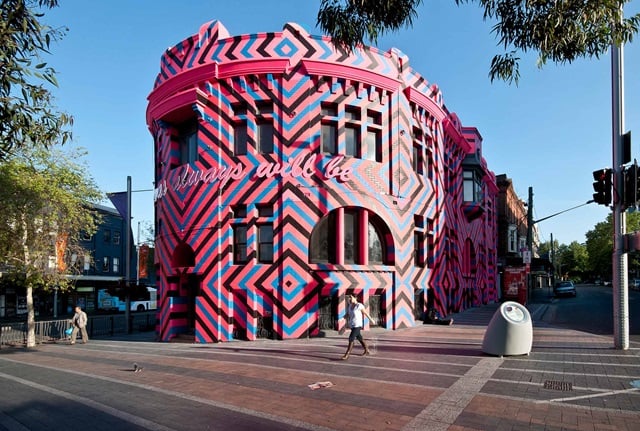


A replica of Florence’s famous wild boar invites donations from the public for Sydney’s oldest hospital.
Artwork description
Il Porcellino, meaning ‘the little pig’, is a larger than life-sized bronze wild boar, anatomically realistic and resting on its left haunch and front legs. It sits outside Sydney Hospital, facing Macquarie Street.
The sculpture is an exact replica of an original by Pietro Tacca which has stood in Florence, Italy since around 1633, and is given the local Florentine nickname il porcellino. The boar stands over a pool containing representations of tortoises, snakes, frogs, snails, lizards and crabs. In front is a cast iron fountain receptacle.
The boar and the fountain sit on a sandstone base around 1.8m², in all around 1.6m high.
The monument in Florence is believed to bring good luck if visitors put a coin into the boar’s gaping jaws. The intent is to let it fall through the underlying grating while they rub the boar’s snout to ensure a return to Florence.
Money collected from the monument was used to fund a hospital in Florence. In Sydney as in Florence, donations go to assist the work of the hospital.
More information
The sculpture was a gift to the City of Sydney from the Marchesa Fiaschi Torrigiani, who donated the artwork in 1968.
It is a memorial to Thomas Fiaschi and Piero Fiaschi, her father and brother respectively. Both worked as honorary surgeons at Sydney Hospital and both had distinguished military careers.
Thomas served in the Boer War and World War 1, reaching the rank of general. Piero became a colonel during the same war. Thomas also founded the Dante Alighieri Art and Literary Society in Australia and was president of the NSW Wines Association.
Artist
Pietro Tacca (1577–1640), the Italian sculptor of the original Florentine bronze, was the chief pupil of Giambologna. He took over the workshop of his master on the elder sculptor’s death in 1608, finishing a number of Giambologna’s incomplete projects, and succeeding him almost immediately as court sculptor to the Medici Grand Dukes of Tuscany. Tacca began in a Mannerist style and worked in the Baroque style during his maturity.







